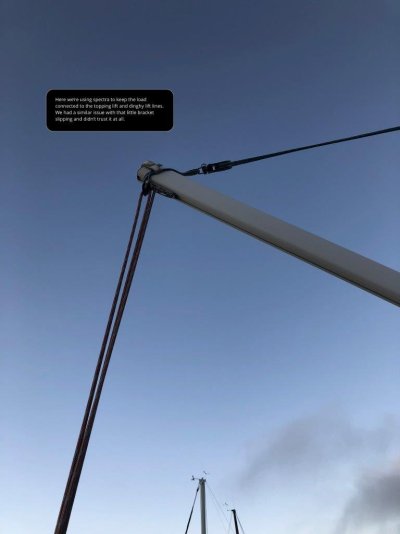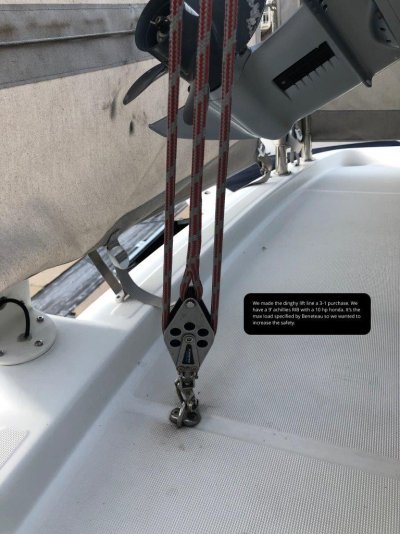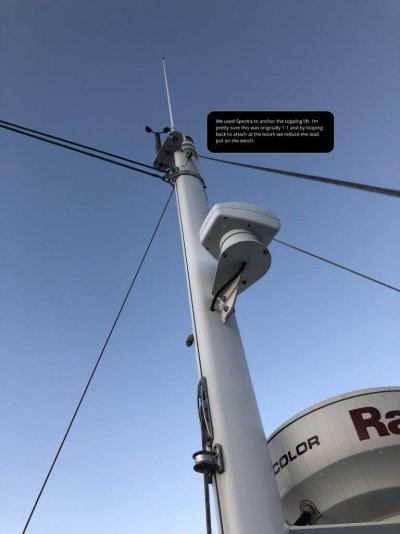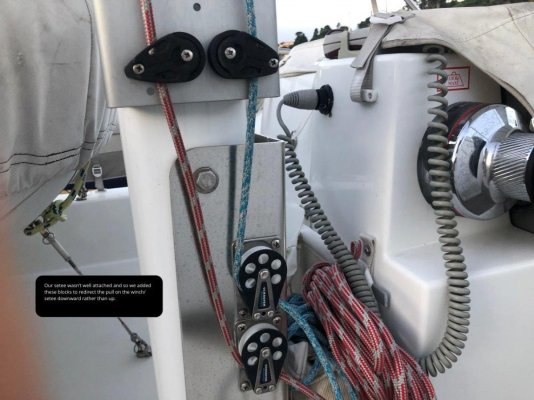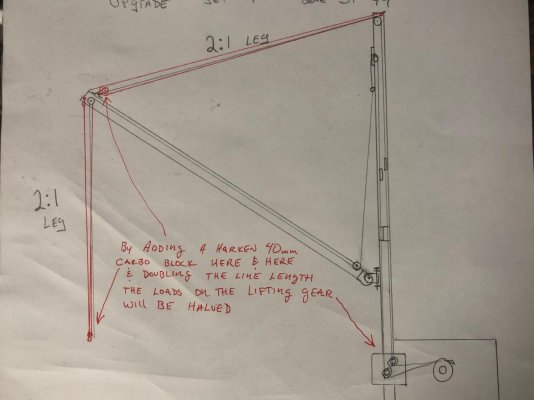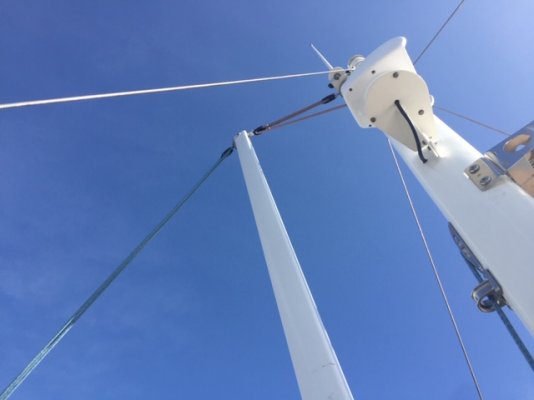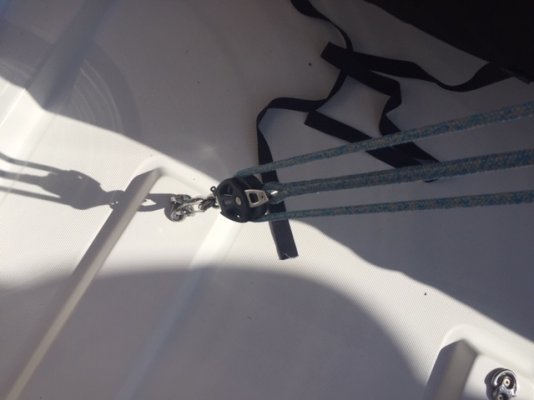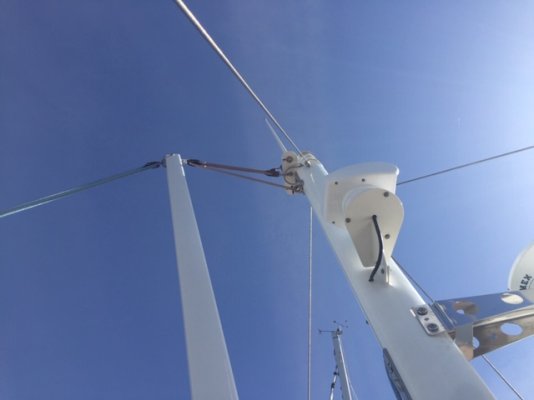There is a lot of chatter in this thread regarding increasing the mechanical advantage of your lifting gear to ease dinghy handling. But be careful. What has NOT been discussed is the HUGE increase in compression loading at the mast base, should an overweight dinghy be hoisted aboard. Or a surge load caused by being waked while dinghy hoisting, or simple boat roll caused by wave action.
I'm not familiar with Beneteau's safe working load for the OEM mast rigging. But it is safe to assume that exceeding this working load, no matter how much reduction in hoisting force results from increasing the mechanical advantage of the lifting gear, may well result in failure of some other part of the standing rigging, or the mast base, or the cabin top, or the fittings, or...etc.
Remember, your mast, boom, cabin top, mast base, fittings, standing rigging, etc. are all part of the dinghy handling "system". Simply beefing up one part of your "system" may cause another to fail, with possible catastrophic results. My daddy used to say, "what you make on the potatoes, you lose on the tomatoes." Wise words for machine design.
Regards,
Pete


